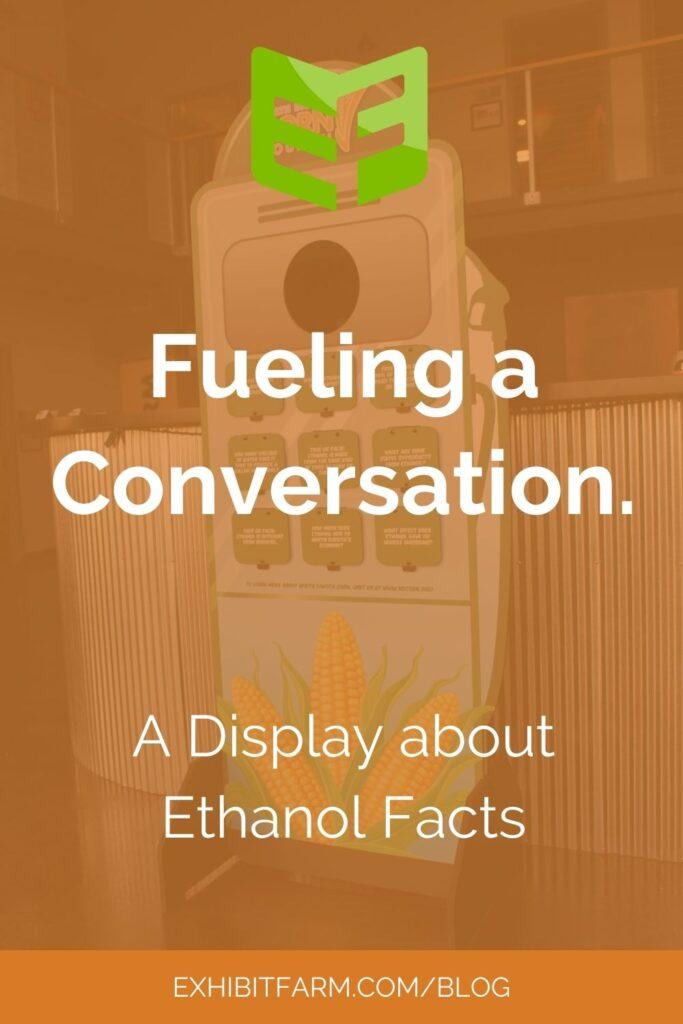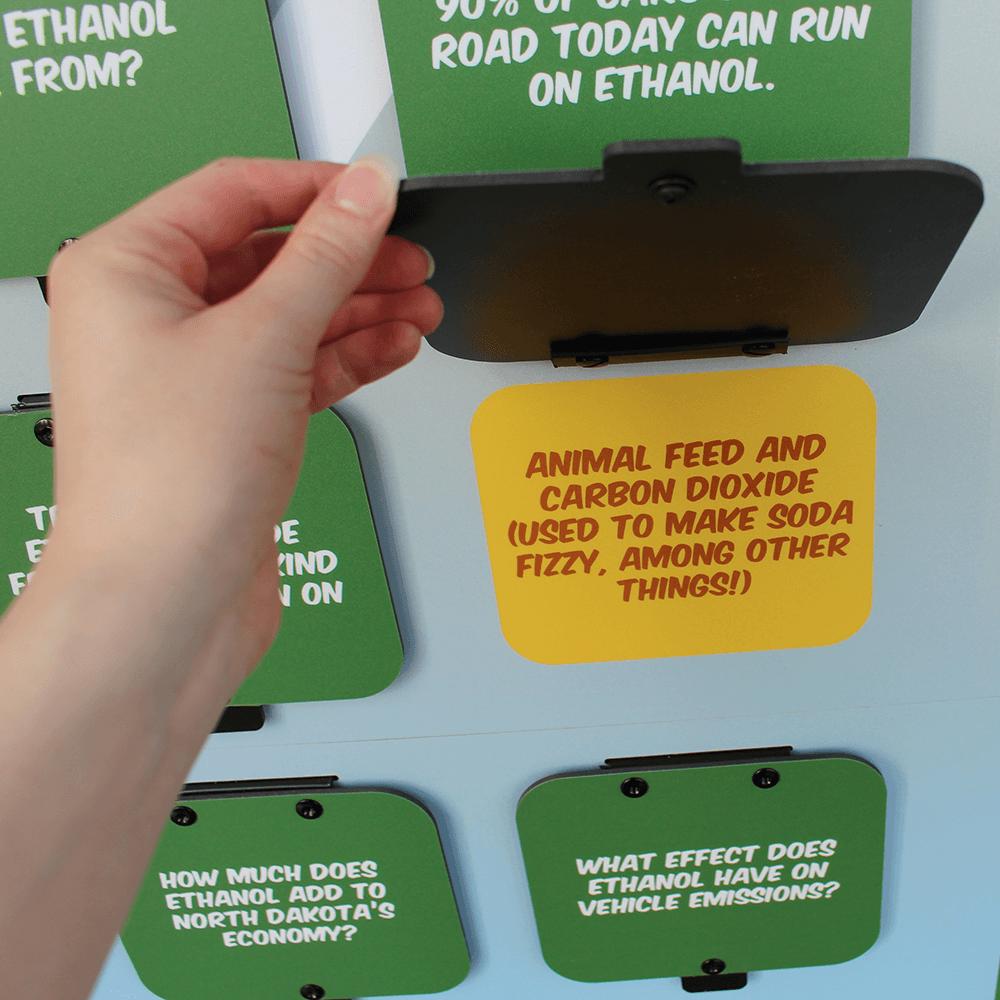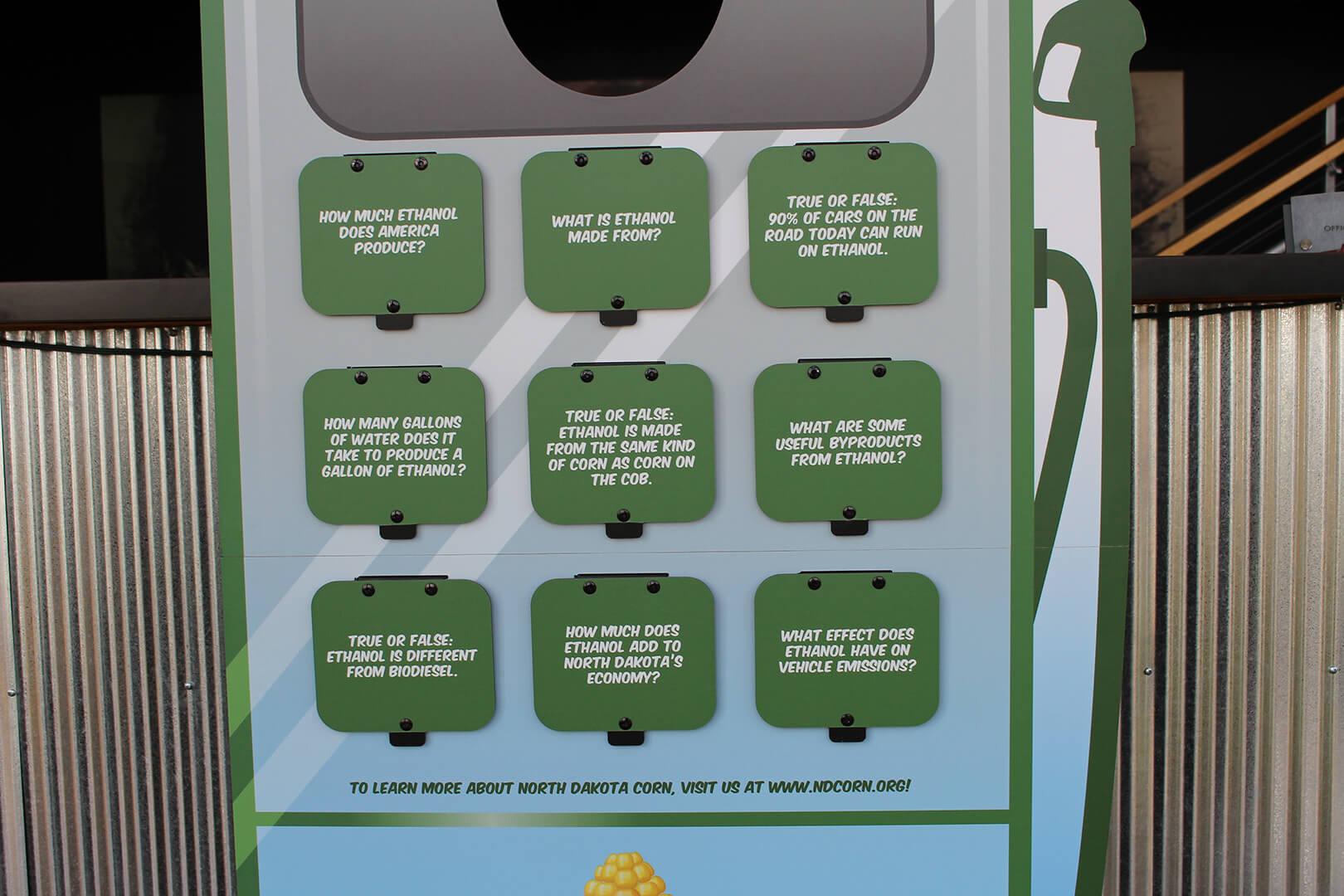
Consumers should know where their food comes from, for sure. What about their fuel, though? Some ag education programs include a display with facts about ethanol, but most focus their energy on explaining where food comes from. Fuel has a direct connection to the consumer, too, though.
Moreover, plant-based fuel plays a major role in the agriculture economy. 40% of America’s corn crop becomes ethanol. And biodiesel uses 30% of the soybean oil produced in the U.S. But even with an impact that big, most consumers only think of food when they think of farms. So this ethanol display aims to change that by introducing people to the world of renewable fuels.
(Check out this display’s page in our online catalog for more photos.)
Fascinating Facts about Ethanol — and More
North Dakota’s corn checkoff first asked us for this display. Since North Dakota is in the top ten ethanol-producing states, they wanted more resources to engage consumers on this topic. And since the story of renewable fuels isn’t complete without biodiesel, they wanted to make sure the display mentioned biodiesel too.
With its gas-pump shape, the display announces its subject at a glance. Like most of our standup displays, it features nine flip-up panels on its front. Those panels feature questions about how biofuels are made, how they help North Dakota’s economy, and more. Visitors just lift the panel to discover the answers underneath.

Several of the questions highlight benefits of ethanol, such as “What effect does ethanol have on vehicle emissions?” Others explain how we make ethanol by distilling it from corn sugars. Another panel defines the difference between ethanol and biodiesel (which comes from fats in soybean oil or animal fat).
The display also addresses some misconceptions about renewable fuels. Consumers often ask whether you can use ethanol blends in a normal engine. So one of our Q&A panels asks if it’s true that 90% of modern cars can run on ethanol. The answer is, that’s true! And if people know they don’t need a flex-fuel vehicle to use ethanol, they might be more willing to try it.
Given the environmental and economic benefits that ethanol and biodiesel can provide, increasing consumers’ awareness and understanding of biofuels is important. And now, North Dakota’s corn checkoff doesn’t have to rely only on face-to-face conversations to engage consumers. They have a whole display for sharing ethanol facts and helping them start conversations.
